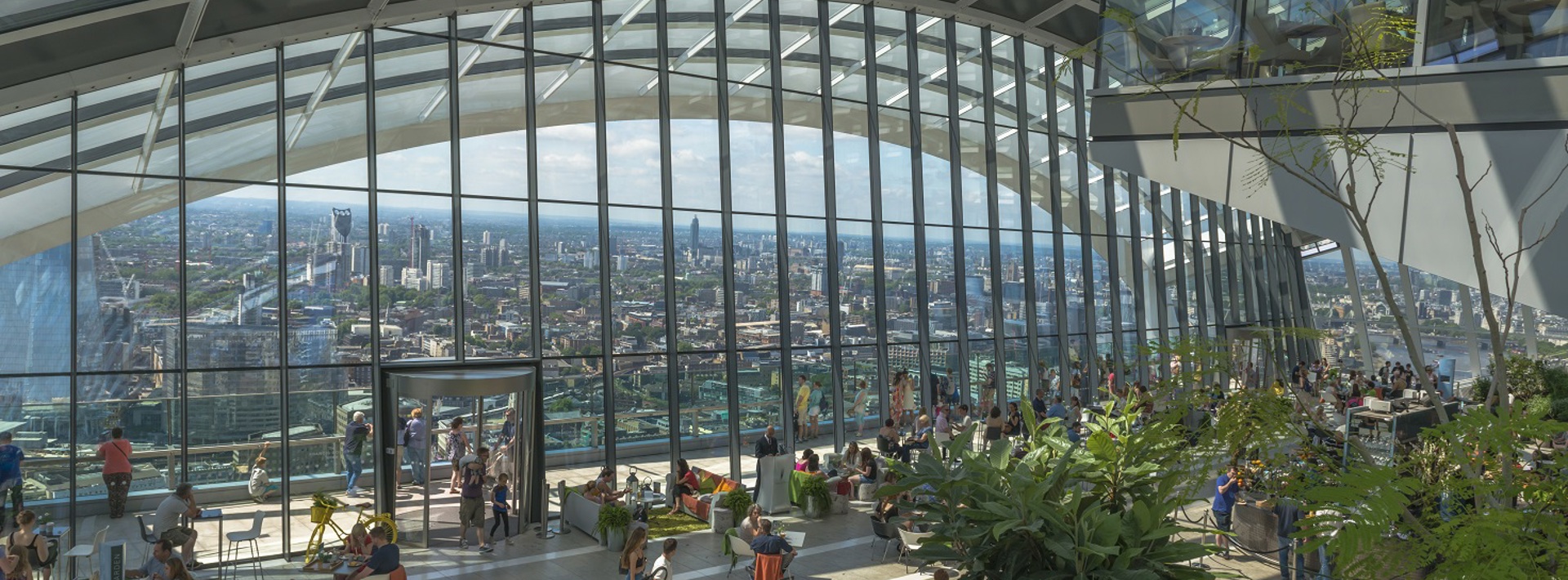Blog
Natural light from the sun is one of our planet’s most abundant resources. When it’s factored into building design it not only adds an aesthetic boost to buildings through glass frontages and angled roofs, but the process of ‘daylighting’ can also bring sustainable benefit to its users, too. Here we look at the advantages of daylighting in design and how it can promote an eco-conscious attitude.
It’s a familiar feeling to most; arriving at and leaving work in near-darkness during the colder months of the year. It’s equally frustrating when you feel like you can’t break away from your desk for a quick walk in the summer sun. All year round, we tend to find that that vital dose of serotonin is just out of reach – unless we’re lucky enough to work where the light can get in unobstructed. Without a good dose of daylight in our lives to straighten out our circadian rhythms, the dark-filled days can be detrimental to our health and well-being.
Along with the health benefits, the effects of daylighting in building design can also be highly beneficial to its end users, taking full advantage of the sun’s daily course across the sky while saving on the need and cost for artificial lighting.
As with any building plan, early considerations are needed in order to make the most of what’s available in the local area – from natural stone types to parking availability – through careful study of the conditions at hand. Planners should also factor in how much light a building can reasonably stand to gain from without creating greenhouse-like conditions or an over-dependence on artificial lighting.
The objectives of daylighting design
A 2006 lecture[1] given to students at Canada’s McGill University focused on the main objectives that daylighting design would ostensibly meet:
- Enhanced aesthetics
- Visual comfort
- Occupant wellbeing
- Organisational productivity
- Lighting energy saving
- Overall energy saving
While the visual comfort and wellbeing of the building’s users combine towards the productivity of the organisation as a whole, the additional benefits of energy saving achieved by clever use of the light available should also be of interest to any company that flexes its sustainability muscle for business benefits. Additionally, a building that incorporates one or more of the most effective daylighting techniques into its overall design can also gain aesthetically from the uncommon final form it will take.
To this end, the lecturer Christoph Reinhart, Ph.D. believes that light itself plays a part in ‘shaping architecture’ and has a hand in every step of the design process; from the optimum width of the lobby for letting the light in, to which way the building itself should face in order to draw in the right amount of light.
While these considerations are always on the drawing board when it becomes time to crack on with the CAD, nine times out of 10 such decisions are made only on the basis of the budget and availability of material, or in the interest of aesthetics alone. But placing the potential for daylighting among a building’s primary objectives is at the moment a near-unprecedented move. With Reinhart’s goals in clear view, however, the advantages are obvious.
Benefits of daylighting
As well as the health benefits that come from a properly-lit building, its occupants will also gain from having a proper view of the outside world – whether that comes from having small enough rooms to benefit on all sides, or the addition of features such as clerestory windows, which bring in more light from their position above the more typical head height.
Clerestory windows are an ideal solution for solving one of the movement’s biggest misconceptions – that daylighting necessitates ‘sunlighting’. If you’re lucky enough to work somewhere that receives so much direct sunlight, you’ll still find the excess glare a distraction that could cause annoyance and maybe even eye strain. Rooms should be designed such that sunlighting is kept to a minimum while also allowing the right amount of overall natural light into the space. Failing that, installing blinds can help to regulate the amount of excess light being let into your immediate field of vision.
There’s also an appetite now for angled windows such as those you’ll see in new constructions like the near-completed[2] Winter and Sky Gardens in Leeds. Here the sloping glass frontage connects two multi-storey buildings designed for office and retail. It’s a striking addition along a largely uniform street that will surely draw attention – not only through its wide west-facing window, but in its potential for drawing daylight through into the large atrium.
With the potential for energy-efficient siting of a home or office building comes the potential for cutting energy costs way down. Through the use of solar panels positioned properly to take full advantage of the available light, you could see your energy needs met – or even surpassed – depending on the amount you’re able to gather.
And the use of smart lighting can also contribute to a saving in energy costs. The Solatube™ system implemented by Eon Energy[3] takes light readings of the immediate area. Depending on the results, it fine-tunes its output to a consistent level in tandem with the available light, giving the medically-recommended lux measurement at desk level for good visibility, as outlined by the HSE[4].
There’s traction in Reinhart’s theory that the design of the building itself can be leveraged to take full advantage of its benefits. Now that there’s weight in the idea that the exterior and interior of a building can both pull their own considerable heft in achieving the daylit dream, it’s up to constructors and clients alike to decide which elements carry the most significant gains.
[1] http://www.arch.mcgill.ca/prof/reinhart/arch447/fall2006/LectureNotes/Daylighting.pdf
[2] http://www.constructionenquirer.com/2014/03/24/new-200m-leeds-central-square-plan-approved/
[3] https://www.eonenergy.com/for-your-business/large-energy-users/manage-energy/energy-efficiency/energy-efficiency-case-studies/solatube
[4] http://www.hse.gov.uk/pubns/priced/hsg38.pdf








